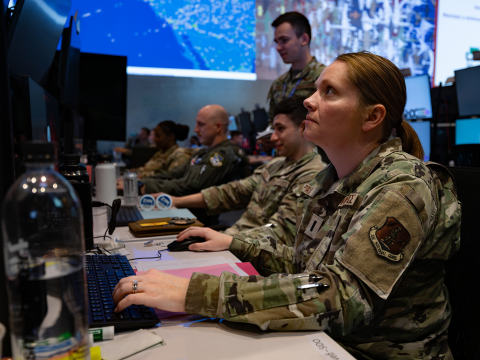Trolling for Data Amid the Rise of Societal Roulette
Not long ago, network-centric warfare (NCW) theologians stated that the information advantage generated by information technology could provide a new competitive warfighting advantage on tomorrow’s battlefield. For the first time in the history of warfare, geographically dispersed forces would be completely networked and thus much more effective. Other terms soon followed to operationalize the theory, such as information/knowledge superiority and information dominance. These terms were operationally refreshing, philosophically mesmerizing and intellectually seductive.
But as a new defense industry emerged to capitalize on NCW-related funding, the technology built on this premise hardly created the knockout punch that was promised. It was argued that if military forces possessed such data-rich insight into the battlefield—garnered by networked connectivity—then they would succeed without failure. If the forces could effect change faster because of the networked ability to communicate all activities between every node, then the opponent would be defeated. The three-week-long “shock and awe” campaign to
Unfortunately, events that preceded the Global War on Terrorism and the challenges that continue today in
Current operational failures are leading to a concentrated effort to buy more defensive armor to counter a constantly adapting threat, as well as to outsource security to offset military casualties and relieve the strain of long deployments. While these efforts are necessary salves, they cannot keep
While expert studies and subjective opinions are widely available—and accessible information on any one subject is growing exponentially—formative, quantitative methods to help shape and create stabilizing policy in ungovernable regions do not exist. Filling servers with more data, crafting clever algorithms to discern relationships between data nodes and developing stunning mosaics that map data interactions are only the start. Without reconciling the embedded nuances and interrelationships within social networks, it is questionable whether progress can be made to prevent either operational failures or strategic defeat.
In the social realm, human interactions, relationships and networks best describe societal intent. What links individuals to social networks are interdependencies: values, ideas, kinship, dislikes, conflicts, trade, theology or ideology. The resulting social networks operate on many levels, from individuals to tribes and from tribes to nations. All of them play a crucial role in determining the way problems are solved and the degree to which the social network succeeds in achieving individual or collective objectives.
The recent advent of online social network services, built on this premise, provides policymakers with the opportunity to view the birth of virtual nations. These online “cultures” showcase communities that share common interests and activities, that are interested in exploring the interests and activities of others, and that use the Web to organize activities or persuade those who are not yet members to join. The Web is full of these social networks: MySpace, Facebook, Twitter and Friendster are just a few of the more popular sites, each possessing different perspectives and intent. They are no different from nations that occupy a place within the United Nations—only they do not make war—just yet.
The rise of social network analysis and game theory provides some clarity to the inside functions of social networks. But the



Comments